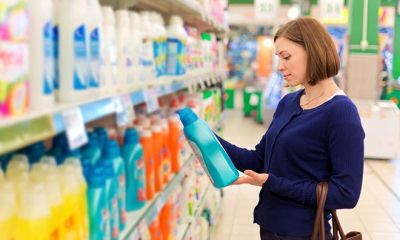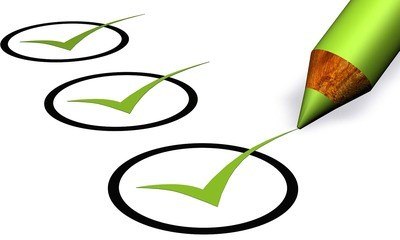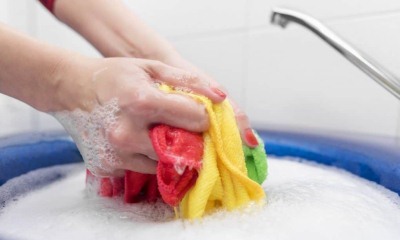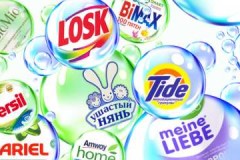Recommendations from experts on how to choose washing powder
 There are many washing powders on store shelves. They differ not only in name, but also in purpose.
There are many washing powders on store shelves. They differ not only in name, but also in purpose.
Read the article about how to choose a high-quality washing powder for washing by hand and in an automatic machine, what should be in its composition, and what form of release to give preference.
Content
Selection rules
To choose a quality washing powder, it is necessary to familiarize yourself with its composition, to exclude the presence of harmful components in it.
No less carefully study the scope of use of the detergent (hand wash or machine), as well as its intended purpose. Not the last factor when buying household chemicals is its price.
What components should be included?
Contains washing powder The following components may be present:
 Surfactants (surfactants). They are divided into cationic, anionic, and nonionic. The most harmful are anionic surfactants, so their concentration should not exceed 5%. It’s even better if they are not included in the composition at all.
Surfactants (surfactants). They are divided into cationic, anionic, and nonionic. The most harmful are anionic surfactants, so their concentration should not exceed 5%. It’s even better if they are not included in the composition at all.- Phosphates (salts of phosphoric acid). They make water softer, increase washing efficiency, but increase the negative impact of surfactants on the human body, and also pollute the environment.
The presence of phosphates in the powder is acceptable, but it is better if the manufacturer replaces them with zeolites.
- Polymers that protect fabric from dirt settling.
- Bleaches: oxygen and optical.
- Enzymes (enzymes). They are responsible for breaking down various types of contaminants, while being absolutely safe for humans.
- Flavors and fragrances. It would be good if they were natural and hypoallergenic.
What shouldn't happen?
Contains high-quality washing powder The following components are missing:
- Phosphates and phosphonates.
- Anionic surfactants.
- Ammonia, which corrodes living tissue and irritates the mucous membranes of the respiratory tract.
- Petroleum distillates. They negatively affect the nervous system and visual apparatus.
- Nitrobenzene.
- Phenols and cresols, which penetrate the human body, leading to its intoxication.
- Formaldehyde, which is a strong carcinogen.
- Phthalates. They are used to retain odors, but they are dangerous for women, as they negatively affect the functioning of the reproductive system.
- Chlorine, leading to diseases of the cardiovascular system, anemia, and allergic reactions.
Hand wash or machine wash?
Powders for manual and automatic washing remove dirt equally well. However, they have a number of differences:
 Washing powder foams more strongly in the basin, so it is not recommended to pour it into the machine; too much foam can cause damage to the device;
Washing powder foams more strongly in the basin, so it is not recommended to pour it into the machine; too much foam can cause damage to the device;- Hand wash products may contain components that can interfere with the operation of the washing machine;
- automatic powder granules dissolve more slowly, so such compositions are not suitable for hand washing;
- The formula of washing powders intended for washing machines often includes components that can harm the skin of the hands, causing eczema and contact dermatitis.
There should be 2 types of powder in the house: for hand and machine washing, which must be used for their intended purpose. He will tell you about the differences between hand washing powders and automatic washing powders. this article.
What kind of laundry is it intended for?
There are compositions on sale intended for fabrics of different colors. Their main features:
- Detergents white things contain whitening ingredients. They allow fabrics to remain snow-white, without turning yellow or turning gray.
- Compositions for colored fabrics. Their formula includes substances designed to protect the pigment from being washed out of the fabric fibers. most often they are represented by polymers.
- Powders for black things. They contain components and pigment fixatives necessary to maintain color saturation. Thanks to the use of such products, black items remain like new longer.
Release form
There are 3 forms of washing powders:
 Powdered product. This is the most common form of release. The powder is represented by small free-flowing white granules with or without blue, red and cyan inclusions.
Powdered product. This is the most common form of release. The powder is represented by small free-flowing white granules with or without blue, red and cyan inclusions.- Gels. Liquid concentrates are convenient because they do not generate dust when dosing and do not clump during storage. They quickly dissolve in water and are better washed out of fabric fibers.
- Capsules. This is a relative newcomer to the household chemicals market. Capsules are a dosed detergent. In addition to concentrated gel, most of them contain fabric conditioner. Capsules are convenient to use, but are more expensive than gels and powder.
Price
Powder prices vary. The final cost consists of several factors:
- point of sale, discounts and markups on detergent;
- brand and country of origin - foreign formulations are more expensive than domestic ones;
- the safety and naturalness of the composition, the presence of a stain remover or conditioner in it;
- washing ability;
- fame and brand recognition;
- release form: the most expensive are capsules, and the most affordable are powders.
How to choose a product for children?
When choosing washing powder for children, The following recommendations should be taken into account:
 the composition must be hypoallergenic, without synthetic flavors and fragrances;
the composition must be hypoallergenic, without synthetic flavors and fragrances;- preference should be given to liquid concentrates, as they rinse things better;
- the packaging must be marked “0+”;
- the composition should not contain surfactants, phosphates, optical brightener, chlorine and other aggressive substances.
The safest laundry detergents children's things contain:
- soap,
- soda,
- citric acid,
- natural supplements,
- zeolites and enzymes.
Helpful information
Tips for purchase and use washing powders:
- The quality of a laundry detergent is a market concept. Each consumer must independently choose a product based on the ratio of price and functionality.
- Allergy sufferers are recommended to use either specialized formulations or household chemicals for children.
- Optical brightener may be included in the product for colored items, but it should not be present in children's powders.
- Products containing enzymes can be used in water no higher than 50 degrees.
- You should not blindly trust the manufacturer’s assurances about the safety of its household chemicals. Before purchasing, you need to carefully study the composition.
A lot of useful and important information about washing powder is presented in given section of the site.
Video on the topic of the article
The video will tell you which washing powder is better to choose:
Conclusion
The choice of washing powder must be approached responsibly. In pursuit of profit, unscrupulous manufacturers add harmful components to household chemicals that can cause serious damage to health and the environment.
You need to especially carefully study the composition of household chemicals intended for the care of children's things.. This will avoid allergic reactions, irritation and inflammation of the skin.


